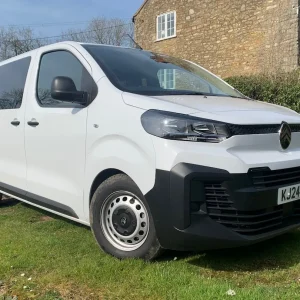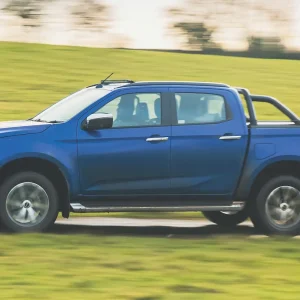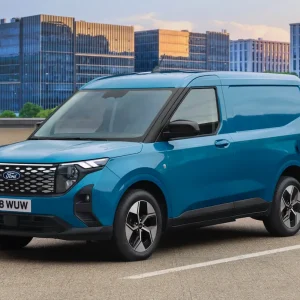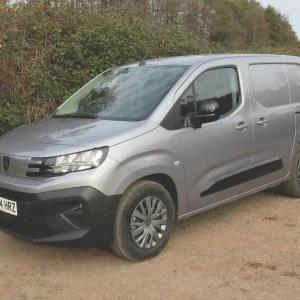Specifying an auto – assuming that one is available as an option – can increase a van’s front-end price substantially. Add to that the historical side-effect of higher fuel consumption and it is scarcely surprising they are none too popular.
Instead, van makers have been known to offer automated manual boxes, which appear to give the best of both worlds. They can be used in auto mode but allow the driver to switch to manual simply by tapping the shift lever, and the fuel returns they offer can sometimes be better than those provided by their manual stablemates.
Most of them have the same drawback, however: they do not like to be rushed. Try to hustle them along and you will be rewarded by hesitant, jerky changes: not a lot of fun for the driver.
That might explain why Mercedes-Benz abandoned the Sprintshift automated box that used to be marketed as an option on Sprinters and introduced a five-speed fully automatic box instead. Available alongside it, but solely on Blue Efficiency models, is the new 7G-tronic seven-speed auto, but at an extra £1834 – all prices quoted here exclude VAT – it does not come cheap. That price does though include an upgraded battery and some Blue Efficiency emissions improvements over the manual, with the gearbox itself accounting for £1475.
The auto is though more efficient than the manual, offering an extra 1.3mpg on the official test cycle.
We sampled the 7G-tronic in a rear-wheel drive Sprinter 313CDI medium-wheelbase high-roof 3.5-tonne van. Its Blue Efficiency badging means it features low rolling-resistance tyres, a limiter that restricts top speed to an, of course illegal, 75mph, and one or two other measures designed to cut CO2 output. Specifying a high roof adds £1139 to the final bill.
Cab
Workmanlike rather than stylish, the Sprinter’s three-seater cab is not short of storage space. Look up to see shelves above the windscreen on both the driver and the passenger side with a cubby-hole between them designed to accommodate a pair of sunglasses. Look down and there are three big shelves on top of the dashboard with a cup-holder at each extremity, while further down there’s a roomy, lockable glovebox, a shelf in the middle of the fascia close to a document clip and a pull-out ashtray that accommodates a cup-holder. Each of the cab doors boasts a big bin with a separate moulding that can hold a large bottle of water or a flask of tea.
Flip down the centre section of the inboard passenger’s seat back and it turns into a handy desk complete with a pen-holder and two slots for cups or cans of drink. There’s a storage compartment underneath the passenger seat cushions. 
For an extra £36 the inboard passenger gets a rather crude-looking fixed steel armrest to hang onto with their right hand rather than one that can be folded down. It’s practical, but tends to get in the way a bit when the driver wants to release the handbrake lever.
Adjustable for height, reach and rake, the driver’s seat offers a position with clear vision ahead and to either side. Cross-cab movement presents no problems: the gear shift lever sits on a small moulding that only bulges out marginally from the dashboard and is not in the way.
Load area
Access to the 10.5m3 cargo bay is by means of twin rear doors that can be swung through 270° – a standard feature – and latched against the van’s sides, or through a sliding nearside door. All three doors are opaque. Both entrances feature grab-handles and steps to aid access. The step at the side is positioned just within the door,
but the one at the back is externally mounted so watch out not to catch it when reversing. The rear step will set you back an additional £109.
Eight floor-mounted load tie-down points are provided plus two more at the base of the full-height unglazed steel bulkhead. A shelf positioned above the cab and accessible solely from the cargo bay will cost you an extra £135.
Maximum load length is 3265mm. Maximum height is 1940mm while maximum width is 1780mm narrowing to 1350mm between the wheel-boxes. Rear loading height is 685mm. The rear door aperture is 1840mm high and 1565mm wide. Dimensions for the side door are 1820mm and 1300mm respectively.
Our Sprinter could handle a 1236kg payload and tow a braked trailer grossing at up to 2000kg.
Powertrain
Under the bonnet you will find a four-cylinder 16-valve 2.1-litre turbocharged and intercooled Euro5 common rail direct-injection diesel generating 129hp at 3800rpm. Maximum torque of 305Nm bites across a 1200-2400rpm plateau and the exhaust system features a particulate filter.
Usually this engine is married to a six-speed manual gearbox but – as indicated earlier – our test van came with the excellent new seven-speed automatic that’s more efficient than its manual counterpart, offering 35.8mpg rather than the manual’s 34.5, and 209g/km of CO2 emissions agains 222g/km.
Chassis and steering
Independent front suspension is fitted while a rigid axle and parabolic springs help support the rear. Stabilisers are installed front and back and our Sprinter rode on 16-inch steel wheels shod with 235/65 R16C Continental Vanco Eco tyres.
Power-assisted rack-and-pinion steering comes as standard.
Performance
There is no denying that the easy-to-use 7G-tronic gearbox offers extraordinarily smooth and seamless changes. Indeed, you are barely aware that it is shifting from one gear to the next. But on a couple of occasions it hesitated when it was put into reverse, as if it was getting its head around the notion of going backwards rather than forwards.
The automatic Sprinter was almost eerily quiet with little or no in-cab noise, and rewarded us with sharp and predictable handling. It holds its position on inclines without rolling backwards but will, of course, creep forwards on the flat.
Aside from the odd glitch with reverse gear, low-speed manoeuvres were executed with ease, although we are not entirely convinced by the idea of the lights in the exterior mirrors to indicate the distance between the rear and an obstruction. We would rather see a screen showing an outline of the vehicle and how far you are from whatever you are at risk of hitting. The £695 Parktronic reversing system beeps, too, when obstacles in front as well as behind loom closer while parking. A dash-top display with little lights shows just how close you are getting.
We had no quarrels with the 313CDI’s on-the-road performance. An enthusiastic motorway cruiser, it accelerates strongly through all gears, with a mild kick-down giving an extra boost when required.
While not uncomfortable, the ride is perhaps a little too firm, and the suspension could probably stand to be retuned in line with the variable quality of British road surfaces. Hitting one especially uneven stretch of A-road at only a moderate speed made us wonder if all our fillings were about to be shaken out. However, the Sprinter itself did not shake at all. Its build quality is a wonder, and makes some competitors look as though they are made from tinfoil.
Equipment and running
Electric windows and cruise control are part of the standard kit as is a Bluetooth-enabled, MP3-compatible stereo radio/CD player with remote controls on the steering column.
The Parktronic package includes electrically adjustable exterior mirrors complete with a lower, fixed, wide-angle section. Our vehicle was also equipped with aircon for an additional £931. Less immediately obvious options provided included a 13-pin trailer socket for £130 and an engine power take-off (PTO) with a bracket for an extra refrigerant compressor, also for £260. A lot of Sprinters are used on chilled and fully frozen work.
The Sprinter is protected by a three-year unlimited-mileage warranty. The onboard Assyst computer tells you when the van needs to visit the workshop.
The time that elapses between workshop visits depends on the use to which the vehicle is put and varies as a consequence. Those not working in an especially arduous industry, however will probably be looking at intervals of roughly 25,000 miles.
Safety
German manufacturers treat safety as a priority and as a result fit some devices as standard that are often options on vans sourced from vehicle makers based in other countries.
Adaptive electronic stability programme (ESP) is rightly included in our Sprinter’s basic spec and should help keep drivers out of trouble. It forms part of a package that also includes an acceleration skid-control system, ABS, electronic brakeforce distribution and brake assist, with disc brakes fitted all round. A driver’s airbag is part of the safety umbrella as well.
Turning to security, buttons on the dashboard enable the locking of the entire van or just the load area, as does the remote for the central locking.
Verdict
Beautifully built, the Sprinter looks as though it ought to last forever, and probably will. It handles well and delivers plenty of performance. It’s pricey, though, especially for the excellent auto, and that may put customers off in the current climate.
The fastest van on the motorway
Launched in 1995, the Sprinter replaced the boxy, by then old fashioned, yet well-nigh indestructible 
T1 van. Over the past 18 years it has developed a reputation as a brisk and efficient workhorse while undergoing periodic updates.
One of the most significant was in 2006, which saw cargo capacity increased to 17.0m3, while the 2.2-litre diesel was redesigned to generate more power and torque, with two-stage turbocharging a feature of the most powerful versions. A mighty 184hp V6 3.0-litre diesel was offered as an option.
Barely three years later the 2.2-litre had gone, and the Sprinter was equipped with the all-new 2143cc Euro5 OM 651 diesel. Unusually, it is equipped with what are known as Lanchester balancer shafts: two counter-rotating shafts that turn within a cassette below the crank case and are driven by crown wheels. It is named after pioneering British automotive engineer Frederick Lanchester, renowned among other things for his work on reducing vibration in car engines in the late 19th century.





